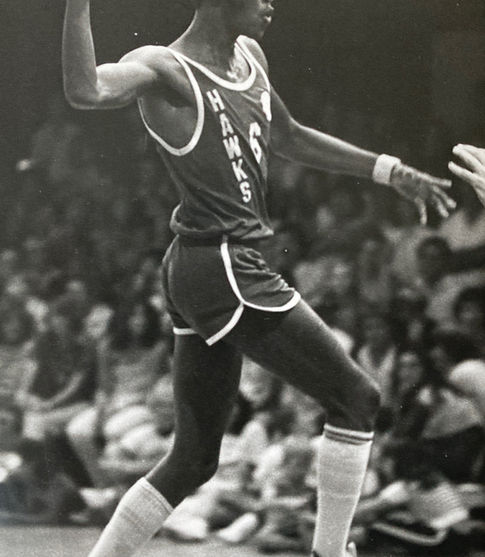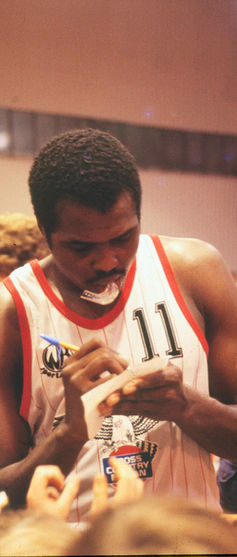ILLAWARRA / WOLLONGONG
1974–1985: Foundations of Flight
Tracing the roots of the Illawarra Hawks, from local beginnings to their emergence as a resilient force ready for the NBL stage.


Our Journey
Before officially entering the National Basketball League (NBL) in its inaugural 1979 season, the Illawarra Hawks were already building a legacy on the hardwood. Their journey began in the South Eastern Conference, a competitive league formed in 1966 that brought the Illawarra men’s team face-to-face with representative squads from Adelaide, Melbourne, Newcastle, Sydney, and Canberra. Local players represented Illawarra in these matchups, and the games drew strong crowds to what is now known as the “Back Courts” of the Snakepit—a venue that would become legendary in Australian basketball lore.
The South Eastern Conference provided a platform for the Hawks to showcase their talents against top-class competition. As basketball gained momentum, sports followers began recognising the sport’s potential to reach a national scale. The seeds of the NBL were beginning to sprout, and Illawarra’s local players were already proving their mettle with the enthusiastic support of their community.
In 1974, a pivotal change occurred when John TrivellionScott, a visionary in Illawarra basketball, took on the role of head coach. He and the players chose the name “Hawks,” giving the Illawarra men’s team a unique identity that reflected their competitive spirit. TrivellionScott was also instrumental off the court—negotiating player and coach contracts, securing sponsorships, and serving as an NBL board member during the 1980s. The following year, Adrian Hurley returned from America to join TrivellionScott as assistant coach, further shaping the team’s development. Together, they laid the groundwork for the Hawks to soar beyond regional boundaries.
The following year, Adrian Hurley returned from America to join TrivellionScott as assistant coach, further shaping the team’s development. Together, they laid the groundwork for the Hawks to soar beyond regional boundaries. Between 1976 and 1978, the Hawks embarked on international tours to the Philippines, Hong Kong, and New Zealand, giving players like Gordie McLeod, Jim Williams, and Ron Smith valuable exposure to international competition. These tours not only sharpened the players' skills but also built camaraderie and ambition within the squad. Future NBL players like Bruce Andrews, Steve Tonkin, Phil Hamer, and Bob Kubbinga wore the Hawks’ colours during these formative years, contributing to Illawarra’s growing reputation as a basketball power.
Hawks legend Gordie Mcleod describes his early recollection of Illawarra Basketball befre the NBL, in this interview from 2010
The Hawks’ first marketing slogan reflected their fiery spirit: “IT’S HELL HANDLIN A HAWK.”
By 1979, the Illawarra Hawks were primed to make their debut in the newly established NBL, joining nine other founding teams in a competition that would redefine Australian basketball. After years of competing in regional leagues and establishing a name in the South Eastern Conference, the Hawks had laid a strong foundation; now, they were ready to take flight on a national stage that would test their resilience and elevate their game.
The first years, from 1979 to 1985, proved challenging and pivotal as the Hawks navigated the hurdles of a fledgling league. With Bob Kubbinga as their inaugural captain and Joe Farrugia as coach, imports Jim Slacke and Ted Holcomb, the team concluded its debut season with a 5-13 record, finishing 8th out of 10 teams. Although the playoffs remained out of reach, it was a respectable showing for a squad finding its footing among well-established rivals.
In 1980, a new chapter began as Adrian Hurley took over as head coach, with a young Gordie McLeod leading as captain. Together, they guided the Hawks to a 13-9 record—a marked improvement. While they narrowly missed the playoffs, this season signalled that the Hawks were growing more competitive and were on the cusp of greater success.
Hawks legend Gordie Mcleod describes his early recollection of Illawarra Basketball befre the NBL, in this interview from 2010
Progress, however, would come gradually. Over the next few seasons, the Hawks continued to build their identity while struggling to find consistent results. Five seasons passed before the team finally reached the playoffs in 1984, only to fall to Newcastle in the elimination final. The following season saw them slip to a 9th-place finish, underscoring the challenges they faced in securing a regular playoff spot.
Progress, however, would come gradually. Over the next few seasons, the Hawks continued to build their identity while struggling to find consistent results.
While the Hawks continued to find their footing in the NBL, 1981 marked the arrival of their first true superstar—Michael “Mike” Jones. The Alabama-born forward didn’t just wear the Hawks jersey; he electrified it. An offensive game as smooth as it was explosive, Jones immediately made an impact, lighting up scoreboards with fadeaway jumpers, powerful dunks, and a scoring touch that defenders simply couldn’t contain.
Jones’ brilliance wasn’t just recognised locally; it resonated league-wide. He claimed the 1981 NBL MVP, becoming the first player in club history to win the prestigious award—a milestone that wouldn’t be matched until Gary Ervin’s triumph three decades later. Averaging nearly 30 points per game, Jones’ scoring feats drew packed crowds to the Snakepit and elevated the Hawks’ profile within the league.
The 1982 season saw the Hawks finish 9th with an 11-15 record under coach Tom Pottenger . While playoff success remained elusive, Jones continued to dazzle, averaging 28.7 points per game during his time in Illawarra with an efficient 51% shooting clip . His offensive prowess helped the Hawks remain competitive while giving the community a player they could rally behind.
In late 1983, with the Hawks in significant financial trouble, the club approached various businesses in Wollongong, seeking assistance to stay afloat. They had just suffered severe losses and faced the daunting prospect of withdrawing from the National Basketball League. One of these pleas landed in the hands of Murray Claydon of Cross Country Motors, who assessed whether sponsorship could be justified within their advertising budget. Ultimately, it was decided that Cross Country Motors could—and should—be involved. A one-year sponsorship was agreed upon, with an option for a further year, giving the Hawks a lifeline when they needed it most.
A management team was subsequently formed, bringing together local business figures to support the club’s future. This team included Paul Devine, Roger Parrish, Arthur Booth, Murray Claydon, John TrivellionScott, Peter Brettell, John Hayne, Sid Webb, and Paul Whiteman. This coalition of business minds provided the necessary stability to help the Hawks press forward, both on and off the court.
In 1984, under the leadership of coach Charlie Ammit, the Hawks broke their playoff drought. The signing of NBA forward Marlon Redmond added a new dimension to the team, and Redmond’s debut 45-point game (the day he arrived in Australia) electrified fans, underscoring the Hawks’ growing competitiveness. Though they were eliminated in the first round by Newcastle, this milestone season marked a crucial step forward for the club.
However, the momentum of 1984 was tempered by a setback in 1985 as the Hawks fell to 9th place, highlighting their ongoing quest for consistency. This era nonetheless established the foundational ethos of the Illawarra Hawks—a team defined by resilience, community backing, and relentless grit. Players like Gordie McLeod began to emerge as leaders, setting the stage for future success.
Hawks pioneer Bob Kubbinga shares his vivid memories of Illawarra basketball’s grassroots journey and the birth of the NBL, reflecting on the team’s passion, challenges, and early triumphs in this historical interview.
This period was not solely about wins and losses; it was about laying the groundwork for a club that would become a pillar of Australian basketball. The team was built on hard work, with players balancing jobs alongside their basketball commitments. Their dedication extended beyond game nights, as they took on responsibilities such as setting up and taking down the demountable seats at the Snakepit themselves—reflecting the working-class ethos that remains at the core of the Hawks’ culture.
Key to the team’s survival and growth during this time was the dedication of the Illawarra Basketball Association (IBA) board members. These leaders, operating behind the scenes, ensured that the club navigated the complexities of the NBL and remained competitive. Their commitment was matched by the support of local businesses, including major contributors like BHP, Clearly Bros., and Cross Country Motors, whose contributions played crucial roles in upgrading the Snakepit.
Initially, the team competed on what are now known as courts 3 and 4, the “back-courts,” until a series of renovations expanded Court 1, turning the Snakepit into a fortress that symbolised the region’s basketball spirit.
These years were about more than building a team; they were about cementing the identity of the Illawarra Hawks as a cornerstone of the community and Australian basketball—a foundation that would fuel their future triumphs and hardships alike.

The Snakepit expansion in 1983, ready for the 1984 NBL Season. Photo: Raymond Flinn
Photo gallery - scroll through or click image to full size.
Photos: Roy C Arneman

























